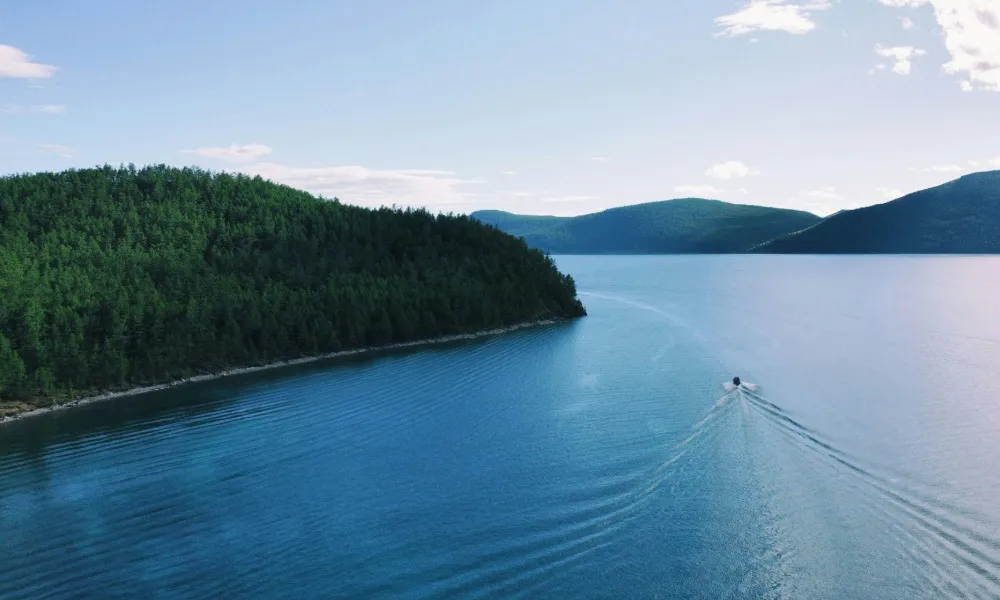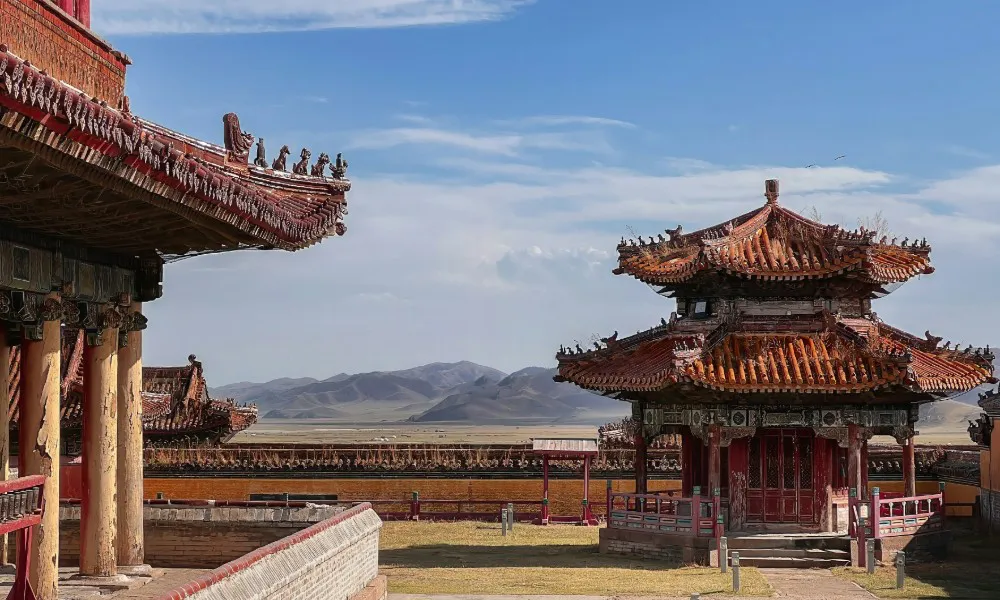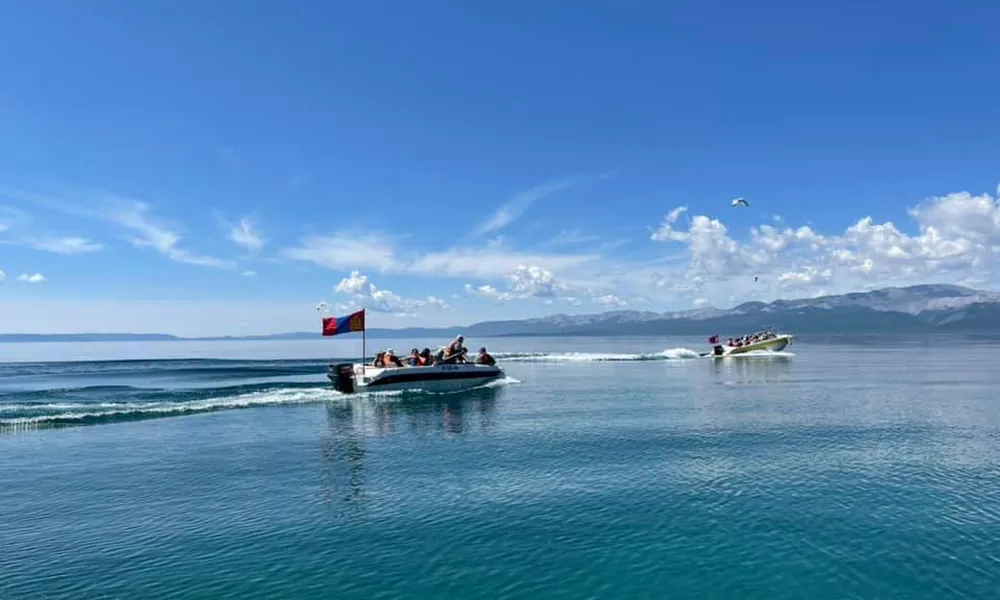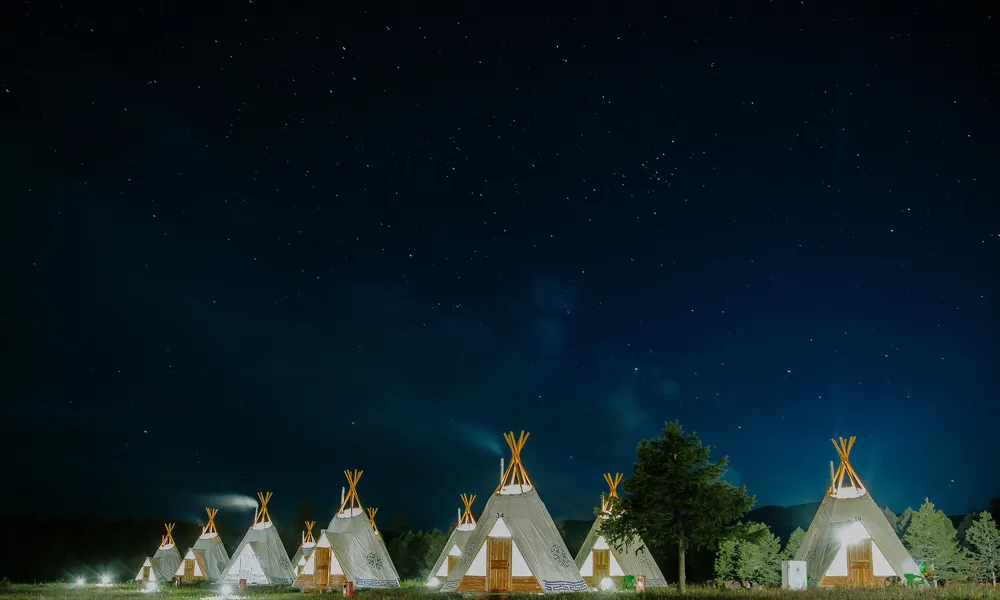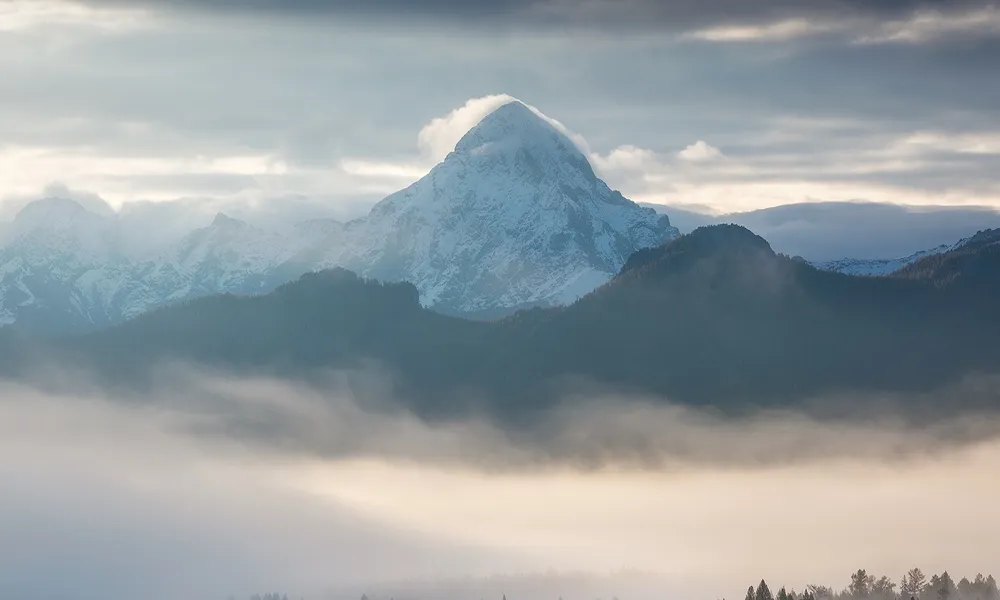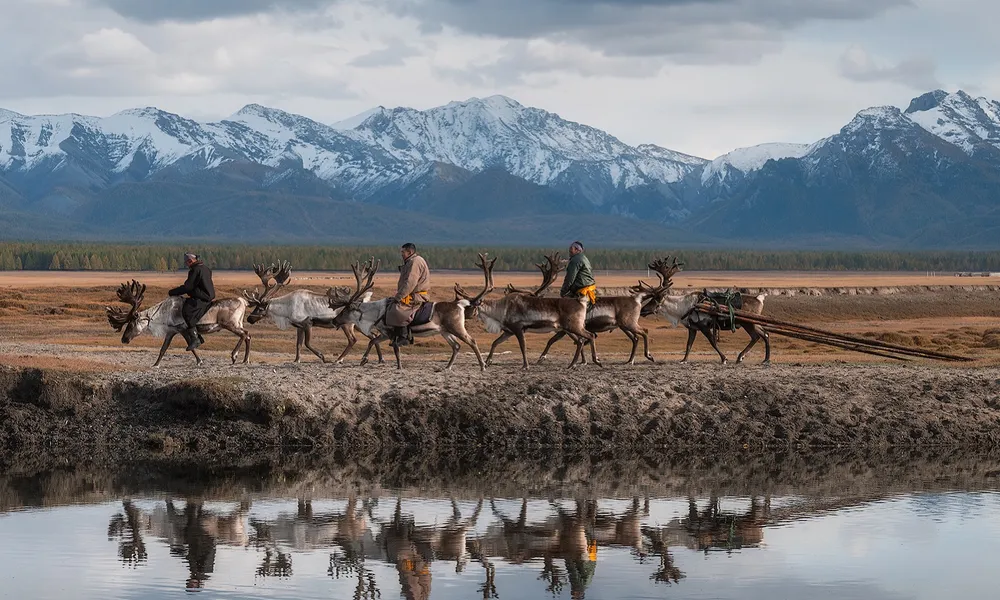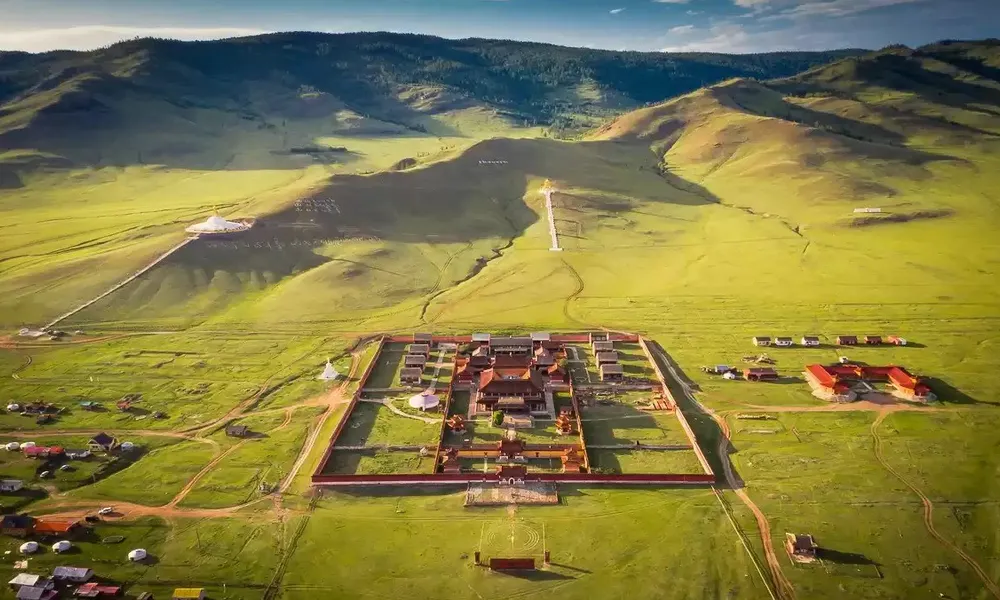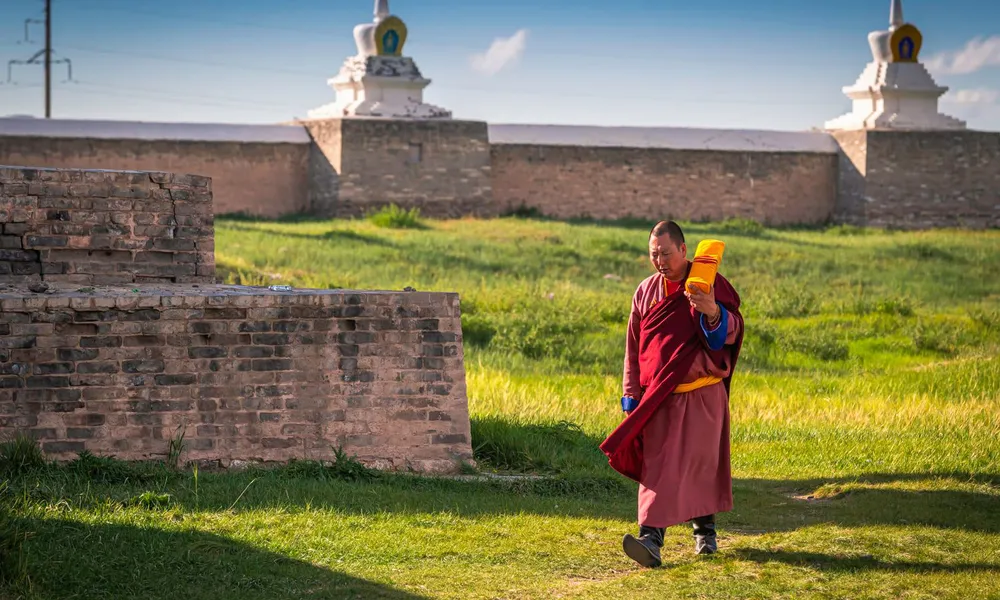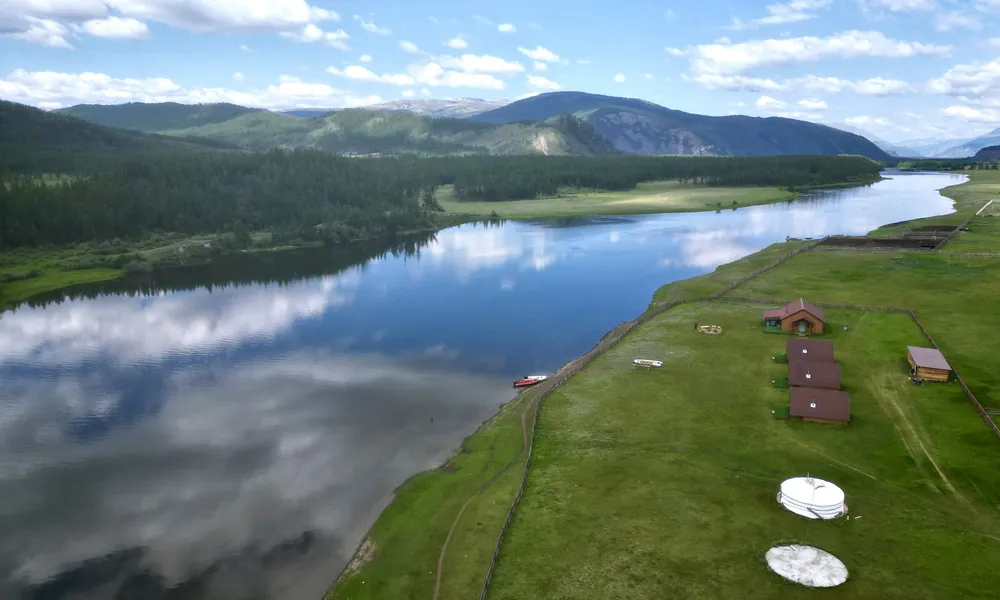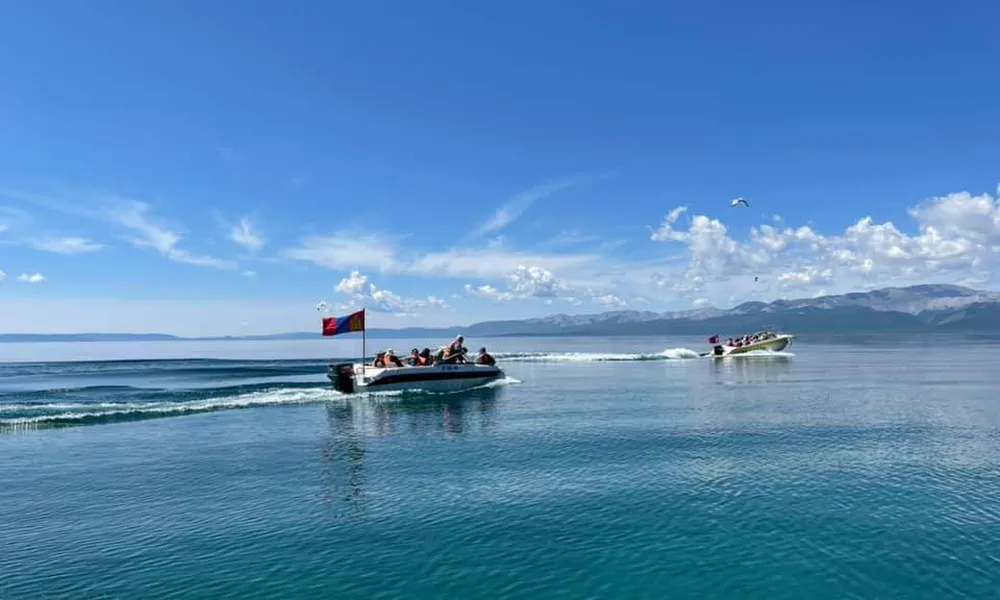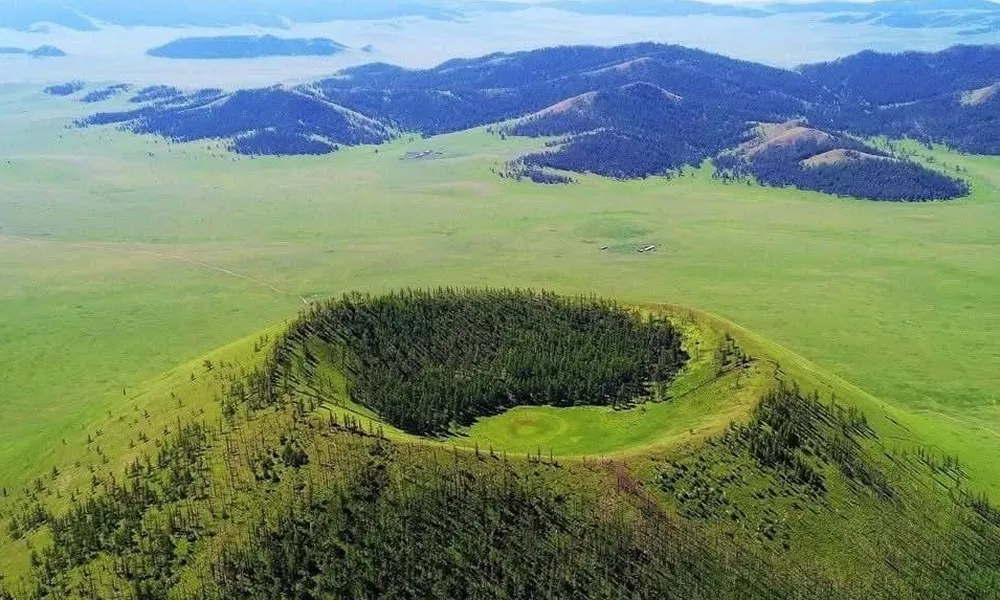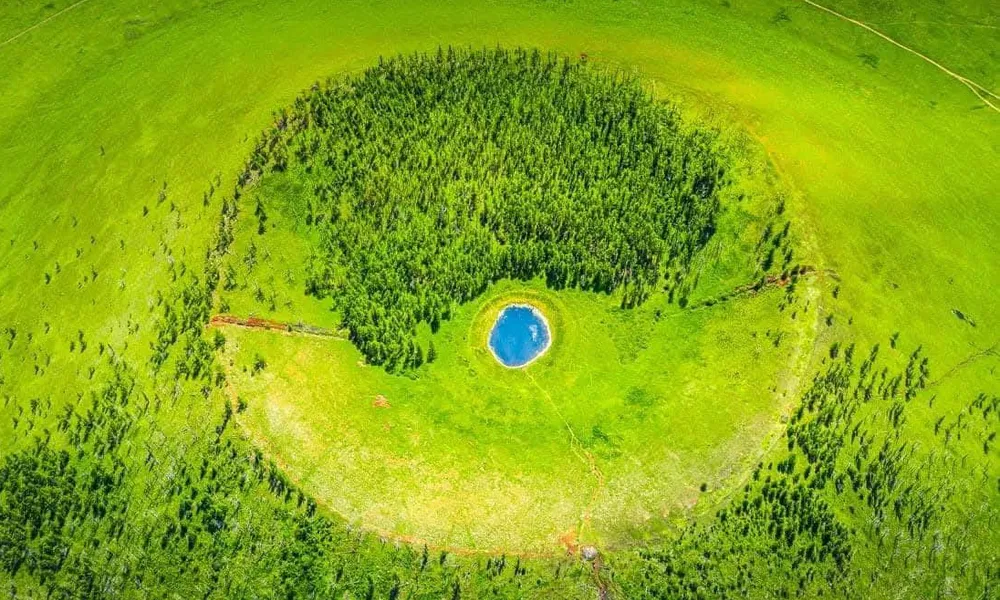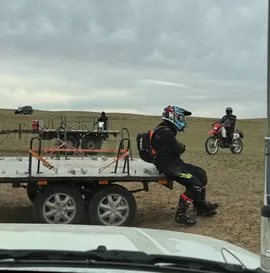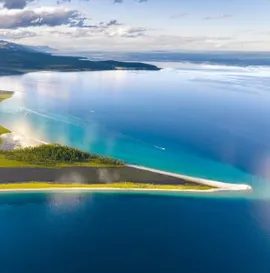Northern Mongolia
Northern Mongolia is a land of alpine forests, volcanic ridges, and crystal-clear lakes. The taiga meets the steppe in sweeping valleys and snow-dusted peaks, anchored by Lake Khuvsgul, the “Blue Pearl of Mongolia” a place of deep spiritual resonance. In the far north, Tsaatan reindeer herders preserve a forest-bound nomadic life shaped by ancestral rhythms.
The region teems with wildlife moose,elk, brown bears, Siberian ibex and offers rich experiences in mototrcycle rides, trekking, horseback riding, and cultural immersion etc. Ancient deer stones and Buddhist monasteries echo centuries of history, from shamanic roots to Mongol empire legacies. Northern Mongolia invites travelers into a quieter, greener world where nature, tradition, and resilience intertwine.
Khuvsgul National Park
Mongolia’s alpine sanctuary, surrounds Lake Khuvsgul the “Blue Pearl” which holds 70% of the nation’s fresh water. Set near the Russian border, the park spans over 9,600 km² of volcanic ridges, larch forests, and mountain meadows.
Wildlife thrives here, from moose and ibex to snow leopards and golden eagles. Cultural depth runs just as deep: Tsaatan reindeer herders, deer stone monuments, and Buddhist monasteries reflect centuries of spiritual and nomadic tradition.
Visitors hike, ride horses, kayak, fish, and explore by motorcycle or even on the lake’s frozen surface in winter. With four islands, panoramic summits, and ongoing conservation efforts, Khuvsgul National Park offers a rare blend of nature, heritage, and adventure.
Tsaatan Nomad Family
The Tsaatan, or Dukha, are a small community of reindeer herders living in Mongolia’s northern taiga near the Russian border. Their nomadic lifestyle revolves around reindeer, which provide transport, milk, meat and cultural identity. Families migrate seasonally through forested valleys, maintaining a close bond with nature.
Shamanism remains central to Tsaatan life. Shamans act as spiritual guides, performing rituals, healing, and connecting with ancestral and forest spirits. These beliefs shape daily life, reinforcing harmony between humans, animals, and the land.
Visitors can homestead with Tsaatan families sharing meals, tending reindeer, and experiencing the rhythms of taiga life firsthand. Some may even seek a personal blessing or fortune reading from a local shaman, offering a rare glimpse into Mongolia’s living spiritual heritage.
Amarbayasgalant Monastery
Is one of Mongolia’s three great Buddhist centers and intitutions , built in the 18th century to honor Zanabazar, the first spiritual head of Mongolian Buddhism. Nestled in the Iven Valley of Selenge Province, its name means “Peaceful Happiness.”
The complex blends Mongol, Chinese and Tibetan styles, with 28 of its original 40 temples still standing in perfect symmetry. Its roofless architecture opens the halls to the sky, symbolizing spiritual openness. Remarkably, it survived the Communist purges and now houses sacred relics, thangka paintings, and Zanabazar’s remains.
Today, it remains a living site of worship, pilgrimage, and reflection quiet, majestic, and deeply rooted in Mongolia’s spiritual heritage.
Tengis-Shishged Natural Area
Remote and wild, this alpine region in northwestern Khuvsgul is shaped by the Shishged and Tengis rivers clear, fast-flowing tributaries of the Yenisei. They carve through the Darkhad Valley and Ulaan Taiga Mountains, creating a mosaic of forests, meadows, and rugged passes.
The area is protected as a national reserve and teems with wildlife: snow leopards, moose, red deer, and bearded vultures. Its rivers are legendary among anglers, home to Arctic grayling, Mongolian lenok, and the mighty Taimen are the world’s largest salmonids known as the “River Wolf,” reaching up to two meters in length.
Visitors hike, raft, ride horseback or motorcycle, and homestead with local families. Though a bridge near Renchinlkhumbe improves access, the region remains largely untouched a haven for solitude, adventure, and wild nature connection.
Uran togoo extinct volcano crater
An extinct volcano in Bulgan Province, Uran Togoo is famed for its near-perfect circular crater and summit lake. Its name “Uran” meaning “artistic”, reflects the bowl-like symmetry of the formation. The site is part of the Uran Togoo–Tulga Uul Natural Monument, which includes other volcanoes named after traditional Mongolian cookware: Tulga (tripod), Togoo (cauldron), and Jalavch (small pot).
Visitors can hike the rim, descend into the crater, and enjoy panoramic views of surrounding valleys and distant peaks. Wildlife such as maral deer, argali sheep, wild boar, marmots, and birds like falcons, cuckoos and hoopoes thrive in the area’s fertile forests. Easy to access and rich in symbolism, Uran Togoo offers a quiet, scenic escape into Mongolia’s geological past.

